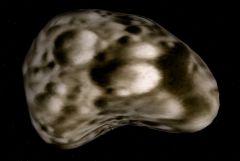Difference between revisions of "Leda"
Jump to navigation
Jump to search
(Added content.) |
|||
| (6 intermediate revisions by 2 users not shown) | |||
| Line 1: | Line 1: | ||
| − | + | {{Nsat-Stub}} | |
| − | |||
| − | |||
| − | |||
| − | |||
| − | + | {| cellpadding="2" cellspacing="0" style="margin:25px 0 0 10px; border:3px solid lightsteelblue;width:250px; font-size:90%; font-family:'Arial','Helvetica'; float: right; clear: right;"Template in Orbiter" | |
| − | + | !bgcolor="lightsteelblue" colspan="2" align="center" |Leda | |
| − | + | |- | |
| − | + | |colspan="2" align="center"|[[Image:Leda-outerplanets060929basezip-Orbiter2006P1.jpg|240px]] | |
| − | + | |- | |
| − | + | |colspan="2" align="center"|'''Leda from ''outer_planets-060929-base.zip'' in Orbiter 2006P1''' | |
| − | + | |- | |
| − | + | !bgcolor="lightsteelblue" colspan="2"|Designation | |
| − | Eccentricity | + | |- |
| − | + | |Name||align="right"|Leda | |
| − | + | |- | |
| − | + | |width="30%"|Reference body||align="right" width="30%"|[[Jupiter]] | |
| − | + | |- | |
| − | + | !bgcolor="lightsteelblue" colspan="2"|Planetary mean orbits | |
| − | + | |- | |
| − | + | |width="30%"|Epoch||align="right" width="50%"|2006.64779710751 | |
| − | + | |- | |
| − | Mean radius | + | |width="30%"|Semimajor axis (a)||align="right" width="50%"|11159388097.287 m |
| − | + | |- | |
| − | + | |width="30%"|Eccentricity (e)||align="right" width="30%"|0.170686524048902 | |
| − | Mass | + | |- |
| − | + | |width="30%"|Inclination (i)||align="right" width="30%"|27.6155320318911° <br> (0.48198195864646 radian) | |
| − | + | |- | |
| − | + | |width="30%"|Longitude of the ascending node (LAN, ☊)||align="right" width="30%"|209.262274721894° <br> (3.65231569410996 radian) | |
| − | + | |- | |
| − | + | |width="30%"|Longitude of periapsis (ϖ)||align="right" width="30%"|490.496630430309° <br> (8.56078117094671 radian) | |
| − | + | |- | |
| − | Leda ( | + | |width="30%"|Mean longitude (L)||align="right" width="30%"|748.718605763851° <br> (13.0676048415206 radian) |
| + | |- | ||
| + | !bgcolor="lightsteelblue" colspan="2"|Selected physical parameters | ||
| + | |- | ||
| + | |width="30%"|Mean radius||align="right" width="30%"|15800 m | ||
| + | |- | ||
| + | |width="30%"|Mass||align="right" width="30%"|5.68×10<sup>15</sup> kg | ||
| + | |- | ||
| + | !bgcolor="lightsteelblue" colspan="2"|Rotation elements | ||
| + | |- | ||
| + | |width="30%"|SidRotPeriod||align="right" width="30%"|20815488 seconds (240.92 days) | ||
| + | |- | ||
| + | |width="30%"|SidRotOffset||align="right" width="30%"|1.0254 | ||
| + | |- | ||
| + | |width="30%"|Obliqutiy||align="right" width="30%"|0 | ||
| + | |- | ||
| + | |width="30%"|LAN||align="right" width="30%"|0 | ||
| + | |- | ||
| + | |width="30%"|Note||align="right" width="30%"|*Elements given are from Leda.cfg (outer_planets-060929-base.zip) | ||
| + | |} | ||
| + | '''Leda (Jupiter XIII)''' is an prograde irregular [[Natural satellites|satellite]] of [[Jupiter]], discovered by [[w:Charles T. Kowal|Charles T Kowal]] at the [[w:Palomar Observatory|Mount Palomar Observatory]] on 14 September 1974. Leda was a princess in Greek mythology who was the mother of [[w:Helen of Troy|Helen of Troy]]. | ||
| − | Leda | + | == Leda in Orbiter == |
| + | Leda was introduced to Orbiter with the release of ''jupiter-iii.zip'' in October 2002. | ||
| + | {|class="wikitable sortable” style="text-align: center" | ||
| + | |colspan="8"|<center>'''Orbiter versions and add-ons which include Leda'''</center> | ||
| + | |- | ||
| + | !Add-on!!Source!!Version!!Author!!Type!!Release Date!!Compatibility!!Wiki article | ||
| + | |- | ||
| + | |[https://library.avsim.net/esearch.php?DLID=&Name=&FileName=outer_planets-060929-base.zip&Author=&CatID=root The Outer Planets 060929 Base]||AVSIM||||Rolf Keibel<br>Carl Romanik<br>Tony Dunn||Scenery||30 September 2006||Orbiter 2006-P1|| | ||
| + | |- | ||
| + | |[https://library.avsim.net/esearch.php?DLID=&Name=&FileName=outerplanets-050125.zip&Author=&CatID=root The Outer Planets 050125]||AVSIM||050125||Rolf Keibel<br>Tony Dunn||Scenery||26 January 2005||Orbiter 2005-P1|| | ||
| + | |- | ||
| + | |[https://library.avsim.net/esearch.php?DLID=&Name=&FileName=jupiter_iii.zip&Author=&CatID=root Jupiter III]||AVSIM||||Rolf Keibel||Scenery||28 October 2002|||| | ||
| + | |} | ||
| + | == See also == | ||
| + | [[w:Leda (moon)|Leda]] at [[w:Wikipedia|Wikipedia]] | ||
| − | [ | + | == Gallery == |
| − | + | <gallery widths="100" heights="100"> | |
| + | Leda-jupiteriiizip.jpg|<center>Leda from ''jupiter_iii.zip'' in Orbiter 2002</center> | ||
| + | Leda-outerplanets050125zip-Orbiter2005P1.jpg|<center>Leda from ''outerplanets-050125.zip'' in Orbiter 2005P1</center> | ||
| + | Leda-outerplanets060929basezip-Orbiter2006P1.jpg|<center>Leda from ''outer_planets-060929-base.zip'' in Orbiter 2006P1</center> | ||
| + | Leda WISE-W3.jpg|<center>Leda as imaged by [[w:Wide-Field Infrared Survey Explorer|Wide-Field Infrared Survey Explorer (WISE)]].</center> | ||
| + | </gallery> | ||
| − | [ | + | [[Category:Articles]] |
| − | + | [[Category:Celestial bodies]] | |
| − | + | [[Category:Solar System]] | |
| − | + | [[Category:Natural satellites]] | |
| − | + | [[Category:Satellites of Jupiter]] | |
| − | |||
| − | [ | ||
{{JupiterSat}} | {{JupiterSat}} | ||
| − | {{ | + | {{SolarSystem}} |
Latest revision as of 12:26, 16 October 2024
 | This natural satellite related article is a stub. You can help Orbiterwiki by expanding it.
Leda (Jupiter XIII) is an prograde irregular satellite of Jupiter, discovered by Charles T Kowal at the Mount Palomar Observatory on 14 September 1974. Leda was a princess in Greek mythology who was the mother of Helen of Troy. Leda in Orbiter[edit]Leda was introduced to Orbiter with the release of jupiter-iii.zip in October 2002.
See also[edit]Gallery[edit]
| ||||||||||||||||||||||||||||||||||||||||||||||||||||||||||||||||||||||||||||||||||||||||||||||||




